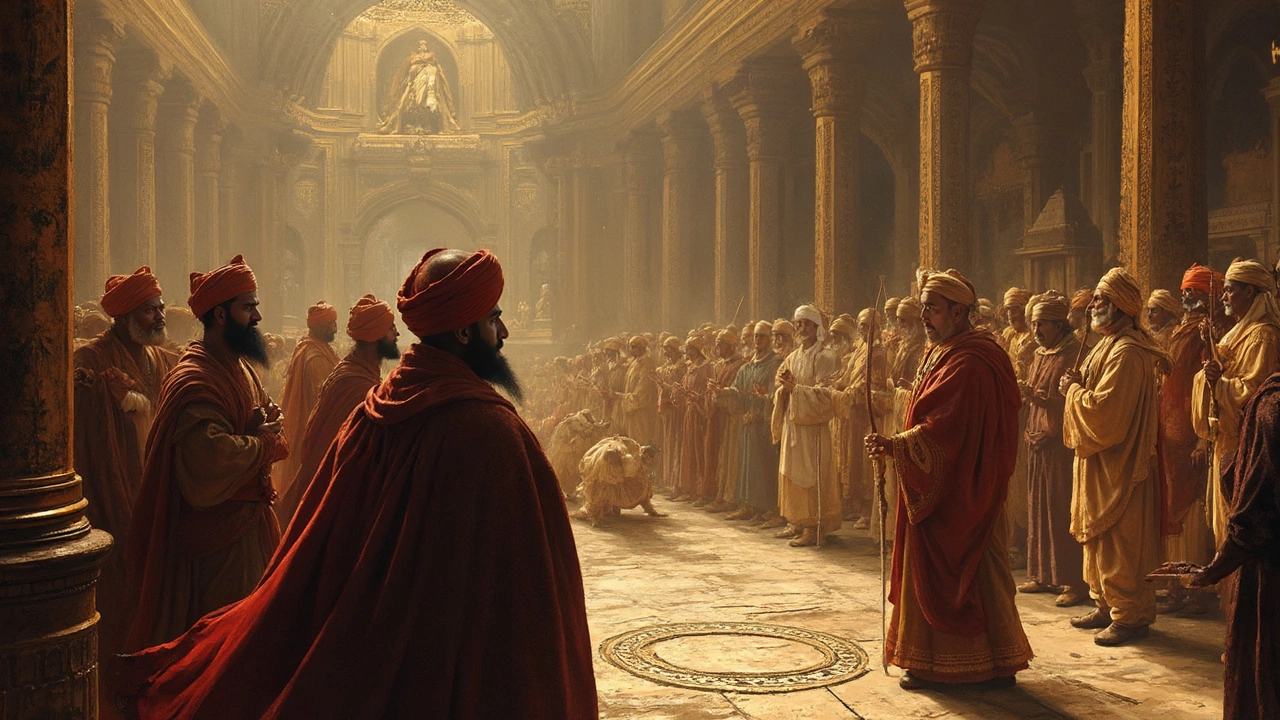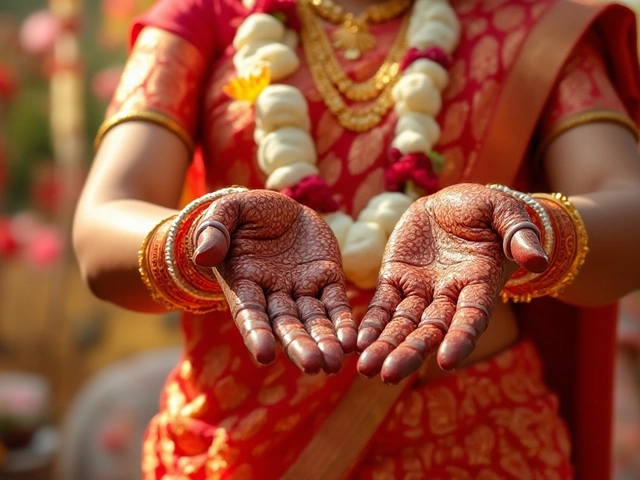The Kirpan is not just a dagger; it's a powerful symbol of Sikh faith and identity. If you've ever wondered why this simple curved blade holds such deep significance for Sikhs, you're in the right place!
This all started back in the late 17th century. In those turbulent times, the tenth Sikh Guru, Guru Gobind Singh, introduced the Kirpan. It was part of the 'Five Ks' – five articles of faith – that every baptized Sikh is supposed to wear. So it's got roots that go way back.
Now, you might think the Kirpan is just a small knife, but there's a lot more to it. For Sikhs, it symbolizes bravery and a commitment to protecting the good and fighting injustice. It’s not some weapon to wield recklessly; it’s a reminder for every Sikh to live up to certain values. Isn’t that something?
- Origins of the Kirpan
- Symbolism and Meaning
- Legal and Social Context
- The Kirpan in Modern Times
- Interesting Facts and Tips
Origins of the Kirpan
The story of the Kirpan goes back to the tumultuous times of the late 1600s in India, during the rule of the Mughal Empire. The Sikh community faced religious persecution, and Guru Gobind Singh, the tenth Sikh Guru, took steps to protect his people and preserve their freedom of faith.
In 1699, Guru Gobind Singh established the Khalsa, a collective body of baptized Sikhs. To define the identity and duty of Sikhs, he introduced the 'Five Ks'—Kesh (uncut hair), Kara (a steel bracelet), Kanga (a wooden comb), Kachera (cotton undergarments), and Kirpan. The Kirpan was introduced as a symbol of courage and the Sikh duty to stand against tyranny and oppression.
Symbol of Defense
The Kirpan primarily symbolizes a Sikh’s duty to protect the innocent and uphold justice, embodying the tradition of 'Sant Sipahi'—the soldier-saint. It is less about being a weapon and more about representing a commitment to self-defense and justice.
Throughout history, the Sikhs have used the Kirpan to assert their autonomy and defend their beliefs. It's important to understand that the Kirpan reflects more on the identity and obligations of the one who carries it, rather than its physical use.
Historical Context
The Kirpan became essential during the times when the Sikh community had to defend themselves from forced conversions and annihilations. It was a time of conflict and constant threat, making self-preservation a critical concern.
This historical context brought about the Kirpan as a wearable article of faith, not just a tool of defense. Even today, it remains one of the key identifiers of being a Sikh and upholding the principles of their faith.
So you see, the Kirpan has never been just a piece of metal; it’s a symbol ingrained with centuries of history and sacrifice, wielded with honor and responsibility.
Symbolism and Meaning
When you see a Kirpan, you might think it's just a ceremonial dagger. But in Sikhism, it carries profound symbolism, serving as an emblem of courage, spirituality, and self-defense. It's not just a weapon but a reminder for every Sikh to stand against oppression and injustice.
The Five Ks Connection
The Kirpan is integral to the 'Five Ks,' which are articles of faith worn by Khalsa Sikhs. These Five Ks—Kesh (uncut hair), Kara (steel bracelet), Kanga (wooden comb), Kachera (cotton undergarment), and Kirpan—are essential to a Sikh's everyday life and spiritual practice. The Kirpan represents the responsibility to protect righteousness and to support the oppressed.
Symbol of Spirituality and Justice
Beyond its physical form, the Kirpan is a spiritual tool that inspires action based on ethical principles. It's symbolic of divine power and the duty to ensure justice. Sikhs believe it ties directly to a fearless and just mindset, encouraging them to confront wrongdoing actively.
Ethical Responsibility
Sikhs are taught to perceive the Kirpan not as a means to inflict harm but to safeguard the defenseless. It signifies that Sikhs are warriors of truth and defenders of morality, but they only wield the Kirpan to maintain peace and harmony. In this context, it's more about carrying a piece of faith that instructs courage and care.

Legal and Social Context
Diving into the legal side of the Kirpan can get a bit tricky. Imagine walking through airport security with a dagger, right? But for Sikhs, it’s an essential part of their faith. This creates a need for comprehensive laws and thoughtful accommodations.
Legal Recognition
In many countries, like Canada and the UK, the Kirpan is legally recognized as a religious symbol, not just a weapon. This recognition safeguards the rights of Sikhs to wear it. In Canada, for example, the Supreme Court ruled in 2006 that banning it in schools infringes on religious freedom.
The Supreme Court of Canada stated, "A total prohibition against wearing a Kirpan to school undermines the value of accommodation and tolerance."
Pretty big deal, right?
Challenges and Controversies
Not everywhere is on the same page, though. In the United States, the Kirpan is largely accepted, but there are still occasional disputes, especially in places with strict security protocols.
Social Acceptance
Socially, the Kirpan is both accepted and misunderstood. Some folks see it as a sign of peace and duty, while others, unfamiliar with the faith, just see a dagger. It’s all about education and awareness. Schools, workplaces, and community centers often hold seminars to bridge this knowledge gap.
Statistics and Data
To put things into perspective, here’s some data on Kirpan-related legal cases worldwide:
| Country | Legal Cases | Resolution Rate |
|---|---|---|
| Canada | 15 | 80% |
| United Kingdom | 7 | 85% |
| United States | 20 | 75% |
As societies become more multicultural, understanding symbols like the Kirpan is critical. It’s not about bending laws but about respecting and embracing diversity. And honestly, isn’t that what makes the world an interesting place to live in?
The Kirpan in Modern Times
Today's world is a complex mix of culture, laws, and social dynamics, and the Kirpan, as a Sikh symbol, sits right in the middle of it. How do Sikhs balance this traditional accessory with modern life? Let's break it down.
Firstly, the Kirpan isn’t just about ancient practices; it holds religious and social importance even today. For thousands of Sikhs worldwide, this emblem represents a daily reminder of their faith and community duties. In Canada, the U.K., and the U.S., where significant Sikh populations exist, the Kirpan is acknowledged as an essential religious symbol.
But here’s the tough part – legal issues. There’s no one-size-fits-all rule when it comes to wearing the Kirpan in public. Schools, airlines, and public places often have policies in place that either allow or restrict it. However, many countries and institutions are becoming more understanding. In some schools, for instance, Sikhs are allowed to wear the Kirpan if it is sewn into a sheath.
Changing Perceptions
The perception of the Kirpan has changed over the years. Where it was once misunderstood, there is now increasing awareness and acceptance. Educational campaigns and community dialogues have played a huge role in helping people understand its significance beyond just being a 'knife.' This way, folks can see it as a religious and cultural symbol.
Kirpan in Airports
Air travel can get tricky if you’re wearing a Kirpan. Security regulations are getting better at accommodating religious articles, yet airport security still requires special procedures for those carrying Kirpans. Sikh organizations have been in talks with airport authorities to facilitate smoother checkpoints without compromising anyone's faith or safety.
Within the Sikh community, discussions continue about the size and visibility of the Kirpan. Smaller Kirpans are becoming more common, offering a discreet way to observe religious duty without attracting unnecessary attention.
All these discussions highlight how the Kirpan is adapting to modern needs and sensibilities. Understanding and open dialogue remain key in ensuring it retains its place as a crucial part of Sikh identity in today's world.

Interesting Facts and Tips
Ever wondered how the Kirpan is viewed around the world? It's fascinating! While it represents deeply held spiritual beliefs for Sikhs, it's also raised some eyebrows in places with strict weapon laws.
Fact: Historical Origins and Design
The Kirpan has a unique design that hasn't changed much since it was first worn centuries ago. Historically, it was about 12 inches long, but in today's world, they can vary between 3 to 9 inches. That's pretty unique for a ceremonial piece, right?
Tip: Wearing the Kirpan Respectfully
If you ever find yourself curious to know how Sikhs wear it daily, here's the tip: it’s typically worn beneath clothes, hanging from a strap called a gatra. This ensures respect is maintained for its sacred role and provides discretion.
Fact: Legal Acceptance
In many countries with significant Sikh populations, like Canada and the UK, special exemptions are made to allow Sikhs to wear the Kirpan. However, balancing respect for religious practices with local laws is ongoing. It's an intricate dance between culture and legislation.
Tip: Communicating with Curiosity
If you're curious and want to ask a Sikh about their Kirpan, approach with genuine interest and respect. Most are happy to explain its significance.
Fun Fact: Pop Culture Moments
Did you know the Kirpan has made appearances in popular culture? In some films, Sikh characters donning their Kirpan are featured, shedding light on this important tradition.
Global Kirpan Statistics
| Country | Population of Sikhs | Legal Stance on Kirpan |
|---|---|---|
| Canada | 500,000+ | Exemptions allowed |
| United States | 700,000+ | Varies by state |
| India | 22 million | Legal and protected |
That’s a little look into the world of the Kirpan for you. Hopefully, now it's clear why this simple item is a big deal for Sikhs worldwide.



